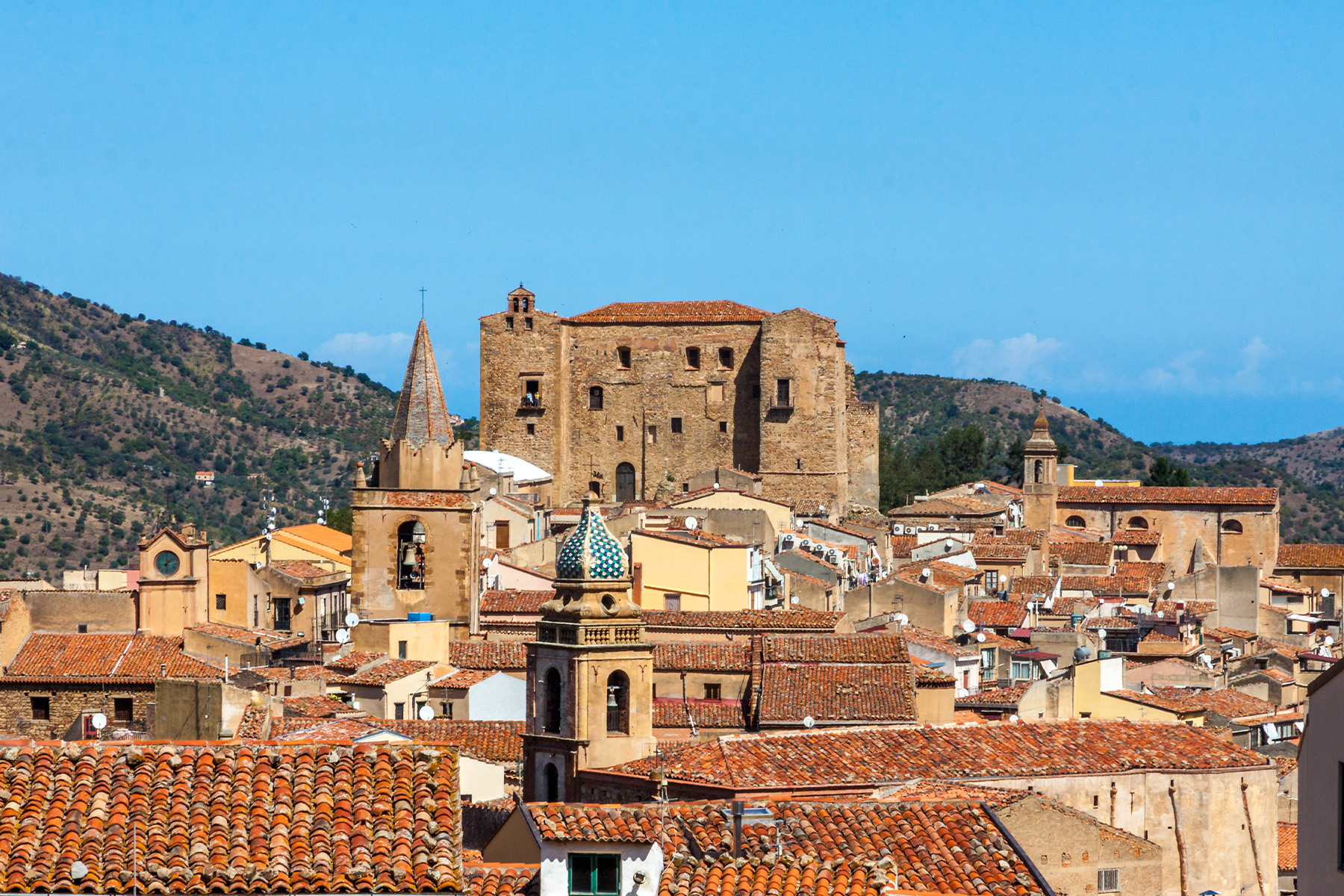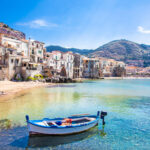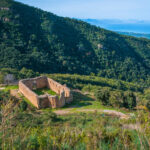
The beauties of Castelbuono
Among the many towns around Cefalù that we recommend you visit is Castelbuono, a beautiful village in the Madonie Park whose history is intertwined with that of an important family, the Ventimiglias.
The village itself was founded by the aforementioned family, since in 1316 Francesco I dei Ventimiglia had a castle built next to the family residence, around which a small community began to develop, until Giovanni I decided to move in with his court in 1454, bringing with him the symbol of the Ventimiglia family’s valour – the Holy Relic of the skull of Saint Anne, preserved in the castle chapel.
St. Anne would later become the patron saint of the town, so much so that the veneration of her is also made explicit in some frescoes on the entablature of the castle columns, together with which she represents a centre around which most of the town’s events revolve.
The Castle is certainly the most prominent attraction: in the lower part is the building’s stables and prisons. On the first floor, on the other hand, is the famous Palatine Chapel decorated with stuccoes in which we can glimpse the Serpotta touch.
The restored rooms of the Castle house the Civic Museum that collects interesting prehistoric and natural history material from the Madonie. These include polished stone weapons, multispecies beetles, lepidopterans and flora collected by the Castelbuono scientist Francesco Minà Palumbo. A separate section houses the archaeological finds from the Bergi necropolis.
In the main square of the town is the ex Mother Church of Castelbuono, a church that has nothing to envy from the others in terms of external beauty and artistic richness. The structure is typically medieval with details that betray its Arab origin. Upon entering, one is dazzled by the splendour of the polyptych located on the high altar. This gold altarpiece was made in 1520 by a Palermo artist who decided to dedicate it to the Madonna (bottom centre). In two niches, there is also a statue of Santa Maria degli Angeli (1520) by Gagini, a well-known artist from Palermo, and Our Lady of Carmel (ca. 1500) by Bartolomeo Berrettaro. The old matrix also features a recently discovered crypt. Inside, there are frescoes from the same historical period, depicting different moments in the life of Jesus.
Another place of interest is the Risorgimento Museum, the first municipal museum dedicated to the 19th-century history of our country. It was created by bringing together all the possessions that were donated by the former mayor to the community and collected by him during his travels around Italy. Through sculptures, bas-reliefs and paintings, the missions of Garibaldi’s men and their tenacity in realising a unifying dream are retraced.
After reliving the dynamism of the wars of the Risorgimento, we return to calm again with the clock tower. Here, a clock dating back to the end of the 18th century with a mechanism from 1885, rare in Italy and still functional, is carefully guarded. Even today, in fact, it is still operated every 12 hours manually. In particular, you can see the clock when it is in action and hear its chime up close.
Castelbuono guarantees with its cultural richness a unique experience not to be missed!



